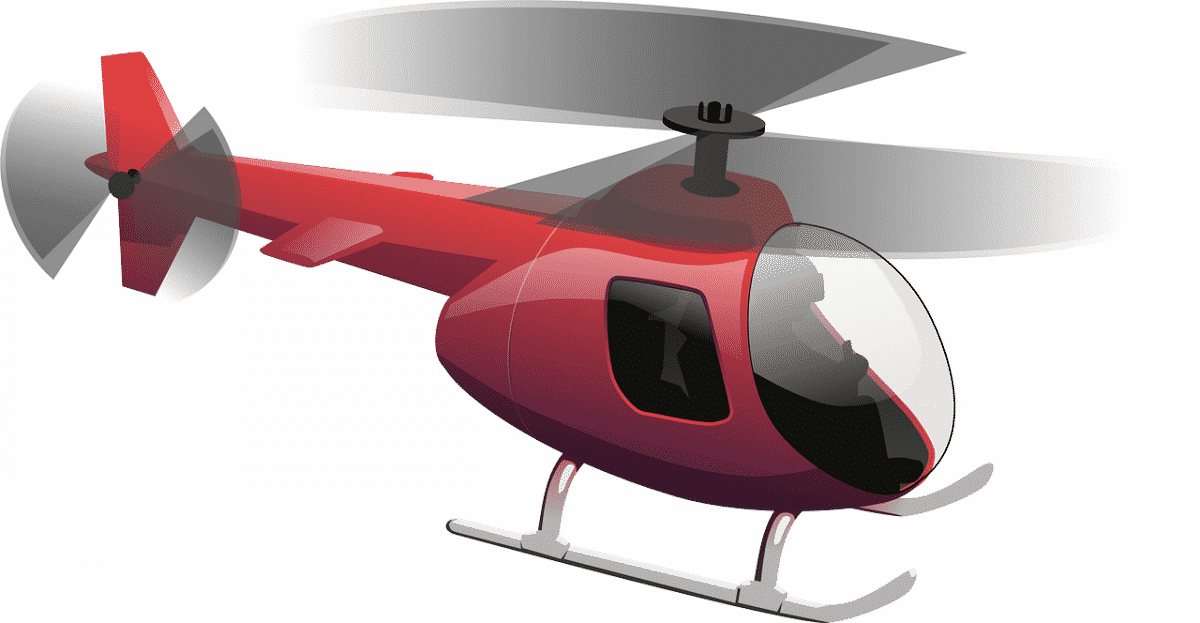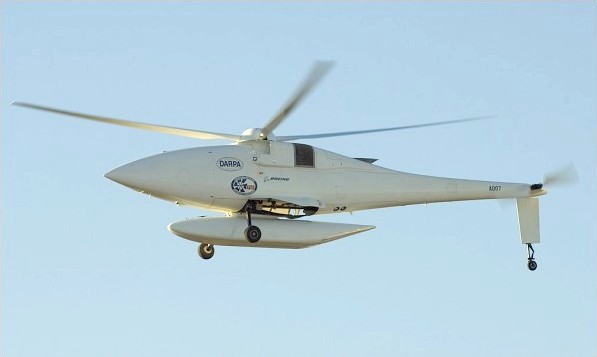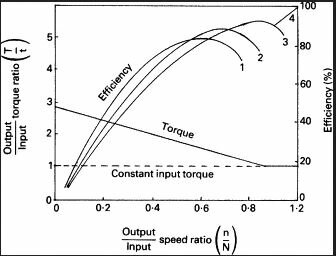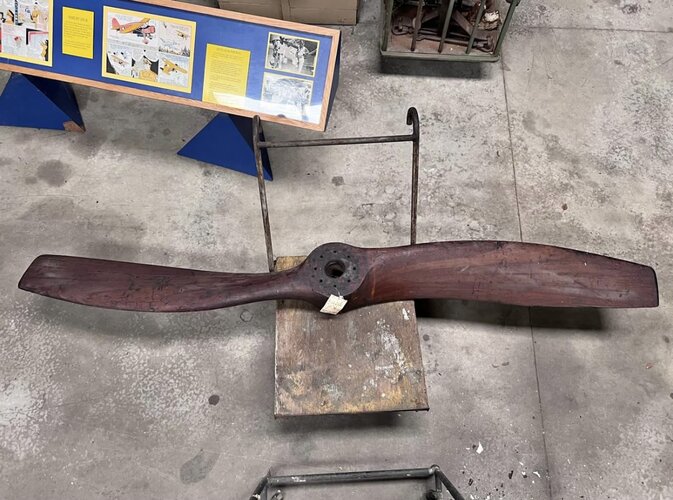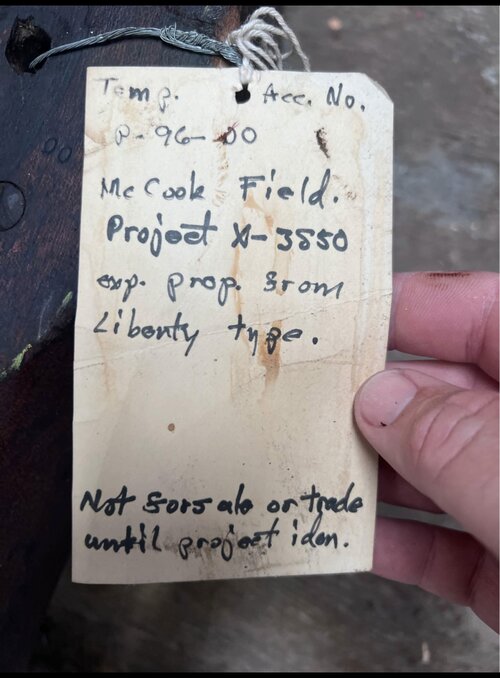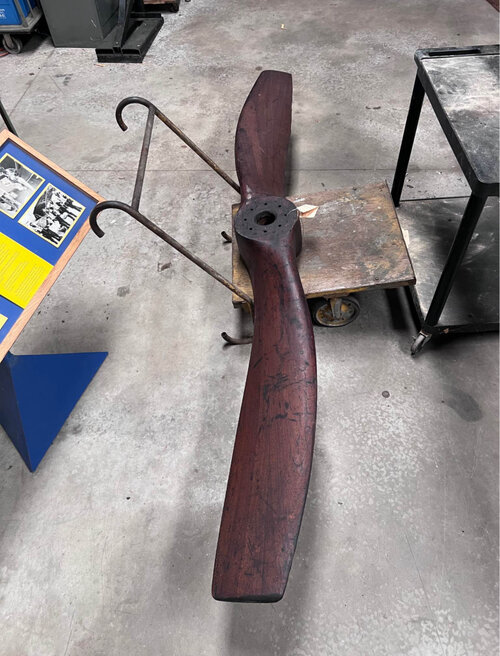xylstra
I really should change my personal text
- Joined
- 23 October 2018
- Messages
- 84
- Reaction score
- 38
The subject is MULTI-SPEED Propeller Airscrews........ "No,NO,NO!" - I DID NOT mean to say Variable-Pitch nor am I confused or mistaken. "YES!", multi-speed, as in changing gear in a car about to climb a hill.
It might very well be news to you but such propeller reduction drive gear systems were contemplated, designed and actually built and tested. In terms of chronological evolution the timeline can be broken down into two distinct phases: [1] early pioneering avaition beginnings when everything new was eagerly explored, not to mention that the virtues of the V-P Propeller were academically acknowledged and understood but the tangible engineering hardware had still yet to catch-up with the theoretical promise and the much later, more mature [2] late-1930's throught to late-1940's era when dreamers and 'celebrity engineers'' (!) dreamed monsters into existence, i.e. 3,000++Hp engines that had to confront, challenge and overcome the limiting barriers of physics, namely the Mach-limit of propeller-airscrew blade-tips exacerbated by the decreasing Mach speed with corresponding increase of altitude. In respect of the latter it matters not whether engine output is 3,000++Hp...., 30,000++Hp..... or even 30 million++Hp. All irrelevant if you can't then translate it into useable thrust and the only foreseeable solution to the dilemna in those days was resorting to ever larger blade-disc diameters (never mind the undercarriage length)!
I am on a quest, a mission if you will to peel back the layers of obscurity and blow away the swirling mists of time to reveal more of this long-lost and forgotten evolutionary technological dead-end. Someone has to care enough to bother, right? Never mind the fact that it's bloody interesting!
Not a solo effort - can't be done alone, need your help.......
So then, where did it all start? My earliest record (such as it is!) gives the 1st claim-to-fame to the pioneering experiments conducted at McCook Field in 1924 by the aviation research facility operated by the U.S. Army Corp of Signal Engineers ... confused? Unravelling of that mini-mystery: signalling was the domain of the Army's tethered observation balloon detachment. New-fangled airplanes were regarded by the senior Army 'brass' as simply untethered balloons with wings! Nutty logic but one way to shift that awkward nugget from the 'too hard' basket! This link provides a vivid description:
 Apparently the 2-speed, V-12 Liberty engine conversion was first conceived in 1922. As an aside, all survivng descriptions of the McCook Field operation convey a wonderful pioneering, 'frontiersman' type of atmosphere, a veritable adults playpen for DIY inventors - "Oh, Halcyon days!!" - before it disbanded and ceased operations in the late 1920's in a hand-off to the newly formed NACA. Unfortunately, the rapid-fire, shoot-from-the-hip approach meant that records-keeping may not have been as good as it could have been or else the beaureacrats who closed the facility were historically short-sighted and cast valuable records and documents into the flames because very little of substance seems to have survived {go on then, prove me wrong; "dare 'ya" (plee-e-ase....)!}.
Apparently the 2-speed, V-12 Liberty engine conversion was first conceived in 1922. As an aside, all survivng descriptions of the McCook Field operation convey a wonderful pioneering, 'frontiersman' type of atmosphere, a veritable adults playpen for DIY inventors - "Oh, Halcyon days!!" - before it disbanded and ceased operations in the late 1920's in a hand-off to the newly formed NACA. Unfortunately, the rapid-fire, shoot-from-the-hip approach meant that records-keeping may not have been as good as it could have been or else the beaureacrats who closed the facility were historically short-sighted and cast valuable records and documents into the flames because very little of substance seems to have survived {go on then, prove me wrong; "dare 'ya" (plee-e-ase....)!}.
Don't know about you, but I'm having a lot of trouble believing that any aviation experimenter could look covetously upon the planetary gearbox from a FORD Model T and not see within it the makings of the perfect donor 2-speed propeller reduction gear for a few make-shift improvisations to try their hand at proving it'll work. Did they, or didn't they? Tell me please!
Anyway, I digress. back to the timeline:
Next up, almost simultaneously across the 'pond' the great and famous Arthur J. Rowledge (Oh come off it, surley you know your aero-engine history? Yess-ss, that's right, the guy who penned the design of the NAPIER 'Lion'.... oh God, you mean you've NEVER heard of that either? Have you only just arrived on Earth??) having just had a mutual falling-out with ex-employer NAPIER was hauled into ROLLS-ROYCEs' liferaft and then set about exercising his fixation with 'X' configuration aero-engines - his personal 'stamp' was all over R-R's "X"s. However rather early in the piece - around 1927 - he took a slight detour with a WW1-era V-12 'Eagle' donor to graft on and test a 2-speed propeller reduction gearbox which became the very last Mark XV in the 'Eagle' V-12 series and remained a one-off prototype (his name is on the patent that relates). Third-hand accounts vindicate it's predicted improved flight performance though independent corroboration is missing (and wanted!). Ironically, the 'Eagle's' generation-later H.24 sleeve-valve namesake was also proposed with a 2-speed propeller gearbox but insofar as anyone knows the proposal never progressed to the hardware stage and possibly not even to the drawings stage. Simply, no-one knows though it's solid concept is confirmed by its mention in a HAWKER fighter proposal brochure. These are BIG black holes in an important piece of R-R history that need to be filled - and "Yes", I've already contacted the R-R Heritage Trust - NOTHING found. "Damn!!"
So, can anyone fill in the blanks???
Back across the 'pond' LYCOMING were kicking around ideas for 2-speed reduction gearboxes for the '-5' and '-7' variants of the XH-2470 upper/lower deck H.O. 24-cylinder aero-engine and thence to the late/post-WW2 mighty XR-7755. No detailed information on the gear-boxes (e.g. drawings, pictures, etc) seems to be around. I've also been unable to do any patent searching not least of which because LYCOMING seems to have had a complicated ownership structure so I really have no idea what correct search term to use for the 'assignee' entry-field in ther U.S. Patent database. Can anyone supply this and all other 'missing' information to fill in the gaping holes?
......... and of course, how could anyone over look WRIGHT Aeronautical Corporation? They had an active 2-speed propeller reduction gearbox program relating to some equally innovative aero-engines, e.g. the WRIGHT XR-4090-3. Check-out this patent as but one example of the breed: https://patents.google.com/patent/US2225121?oq=inassignee:Wright+inassignee:aeronautical - ooh, and by the way the inventor, Wilton G Lundquist is another famous 'celebrity' engineer. I won't spoil the surprise of his many credits so I'll leave you to check him out.....
Now that your appetite for the subject has been whetted I want to include yet another interesting development in the field of multi-speed propellers the pinnacle (so far), in fact:
The STUDEBAKER XH-9350 Aero-Engine
...... "The what??" I hear you ask. Bet you've never heard of it and yes, it was intended to have a 2-speed propeller drive. If you haven't yet 'twigged' to what makes it so special, the type code should give you the clue - '9350' is cubic inches of displacement!!
Follow-up here for more information:
https://oldmachinepress.com/2018/11...heir-involvement-with-other-aircraft-engines/
So, where are we at? Astonishingly, so far (with the sole exception of one minor early 1930's German patent) the multi-speed propeller development 'landscape' seems to be an entirely British/American show.
"WHAT!!" "How could this be??!"
Where the hell are all the other major aviation nations - the French, the Italians and especially, the Russians?? The laws of physics are universal so the technical challenges of developing ultra-high output aero-engines are equally identical as are the likely technical solutions. Am I to believe that these nations can not, at the very least, have investigated multi-speed propellers? So where are the reports, the patents, drawings, pictures, technical papers, magazine articles, etc, etc??
I need your help! Send me EVERTHING!!
I have no expertise in the realm of formal Patent searching so please, if you are a patent attorney or examiner, but especially in non-U.S. countries where language is higher-tier barrier exacerbating the search difficulties then your assistance and offerings would be most appreciated. I would like to develop technical aviation contacts in these other countries so feel free to contact me - I don't mind broken English ('GOOGLE translate' will hammer the message back into shape!!).
It might very well be news to you but such propeller reduction drive gear systems were contemplated, designed and actually built and tested. In terms of chronological evolution the timeline can be broken down into two distinct phases: [1] early pioneering avaition beginnings when everything new was eagerly explored, not to mention that the virtues of the V-P Propeller were academically acknowledged and understood but the tangible engineering hardware had still yet to catch-up with the theoretical promise and the much later, more mature [2] late-1930's throught to late-1940's era when dreamers and 'celebrity engineers'' (!) dreamed monsters into existence, i.e. 3,000++Hp engines that had to confront, challenge and overcome the limiting barriers of physics, namely the Mach-limit of propeller-airscrew blade-tips exacerbated by the decreasing Mach speed with corresponding increase of altitude. In respect of the latter it matters not whether engine output is 3,000++Hp...., 30,000++Hp..... or even 30 million++Hp. All irrelevant if you can't then translate it into useable thrust and the only foreseeable solution to the dilemna in those days was resorting to ever larger blade-disc diameters (never mind the undercarriage length)!
I am on a quest, a mission if you will to peel back the layers of obscurity and blow away the swirling mists of time to reveal more of this long-lost and forgotten evolutionary technological dead-end. Someone has to care enough to bother, right? Never mind the fact that it's bloody interesting!
Not a solo effort - can't be done alone, need your help.......
So then, where did it all start? My earliest record (such as it is!) gives the 1st claim-to-fame to the pioneering experiments conducted at McCook Field in 1924 by the aviation research facility operated by the U.S. Army Corp of Signal Engineers ... confused? Unravelling of that mini-mystery: signalling was the domain of the Army's tethered observation balloon detachment. New-fangled airplanes were regarded by the senior Army 'brass' as simply untethered balloons with wings! Nutty logic but one way to shift that awkward nugget from the 'too hard' basket! This link provides a vivid description:
Boys' Life
Boys' Life is the official youth magazine for the Boy Scouts of America. Published since 1911, it contains a proven mix of news, nature, sports, history, fiction, science, comics, and Scouting.
books.google.co.nz
Don't know about you, but I'm having a lot of trouble believing that any aviation experimenter could look covetously upon the planetary gearbox from a FORD Model T and not see within it the makings of the perfect donor 2-speed propeller reduction gear for a few make-shift improvisations to try their hand at proving it'll work. Did they, or didn't they? Tell me please!
Anyway, I digress. back to the timeline:
Next up, almost simultaneously across the 'pond' the great and famous Arthur J. Rowledge (Oh come off it, surley you know your aero-engine history? Yess-ss, that's right, the guy who penned the design of the NAPIER 'Lion'.... oh God, you mean you've NEVER heard of that either? Have you only just arrived on Earth??) having just had a mutual falling-out with ex-employer NAPIER was hauled into ROLLS-ROYCEs' liferaft and then set about exercising his fixation with 'X' configuration aero-engines - his personal 'stamp' was all over R-R's "X"s. However rather early in the piece - around 1927 - he took a slight detour with a WW1-era V-12 'Eagle' donor to graft on and test a 2-speed propeller reduction gearbox which became the very last Mark XV in the 'Eagle' V-12 series and remained a one-off prototype (his name is on the patent that relates). Third-hand accounts vindicate it's predicted improved flight performance though independent corroboration is missing (and wanted!). Ironically, the 'Eagle's' generation-later H.24 sleeve-valve namesake was also proposed with a 2-speed propeller gearbox but insofar as anyone knows the proposal never progressed to the hardware stage and possibly not even to the drawings stage. Simply, no-one knows though it's solid concept is confirmed by its mention in a HAWKER fighter proposal brochure. These are BIG black holes in an important piece of R-R history that need to be filled - and "Yes", I've already contacted the R-R Heritage Trust - NOTHING found. "Damn!!"
So, can anyone fill in the blanks???
Back across the 'pond' LYCOMING were kicking around ideas for 2-speed reduction gearboxes for the '-5' and '-7' variants of the XH-2470 upper/lower deck H.O. 24-cylinder aero-engine and thence to the late/post-WW2 mighty XR-7755. No detailed information on the gear-boxes (e.g. drawings, pictures, etc) seems to be around. I've also been unable to do any patent searching not least of which because LYCOMING seems to have had a complicated ownership structure so I really have no idea what correct search term to use for the 'assignee' entry-field in ther U.S. Patent database. Can anyone supply this and all other 'missing' information to fill in the gaping holes?
......... and of course, how could anyone over look WRIGHT Aeronautical Corporation? They had an active 2-speed propeller reduction gearbox program relating to some equally innovative aero-engines, e.g. the WRIGHT XR-4090-3. Check-out this patent as but one example of the breed: https://patents.google.com/patent/US2225121?oq=inassignee:Wright+inassignee:aeronautical - ooh, and by the way the inventor, Wilton G Lundquist is another famous 'celebrity' engineer. I won't spoil the surprise of his many credits so I'll leave you to check him out.....
Now that your appetite for the subject has been whetted I want to include yet another interesting development in the field of multi-speed propellers the pinnacle (so far), in fact:
The STUDEBAKER XH-9350 Aero-Engine
...... "The what??" I hear you ask. Bet you've never heard of it and yes, it was intended to have a 2-speed propeller drive. If you haven't yet 'twigged' to what makes it so special, the type code should give you the clue - '9350' is cubic inches of displacement!!
Follow-up here for more information:
https://oldmachinepress.com/2018/11...heir-involvement-with-other-aircraft-engines/
So, where are we at? Astonishingly, so far (with the sole exception of one minor early 1930's German patent) the multi-speed propeller development 'landscape' seems to be an entirely British/American show.
"WHAT!!" "How could this be??!"
Where the hell are all the other major aviation nations - the French, the Italians and especially, the Russians?? The laws of physics are universal so the technical challenges of developing ultra-high output aero-engines are equally identical as are the likely technical solutions. Am I to believe that these nations can not, at the very least, have investigated multi-speed propellers? So where are the reports, the patents, drawings, pictures, technical papers, magazine articles, etc, etc??
I need your help! Send me EVERTHING!!
I have no expertise in the realm of formal Patent searching so please, if you are a patent attorney or examiner, but especially in non-U.S. countries where language is higher-tier barrier exacerbating the search difficulties then your assistance and offerings would be most appreciated. I would like to develop technical aviation contacts in these other countries so feel free to contact me - I don't mind broken English ('GOOGLE translate' will hammer the message back into shape!!).
Last edited:

